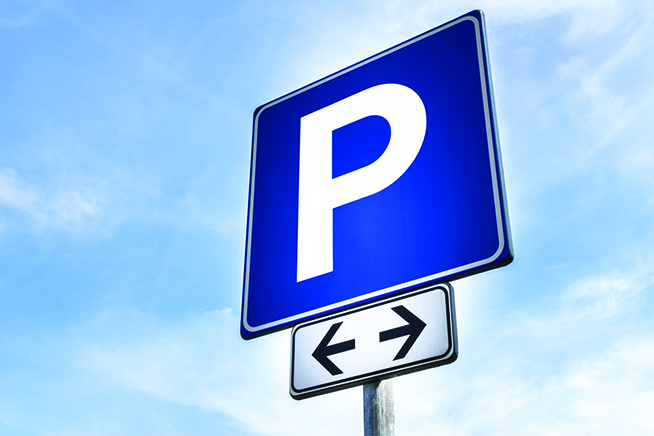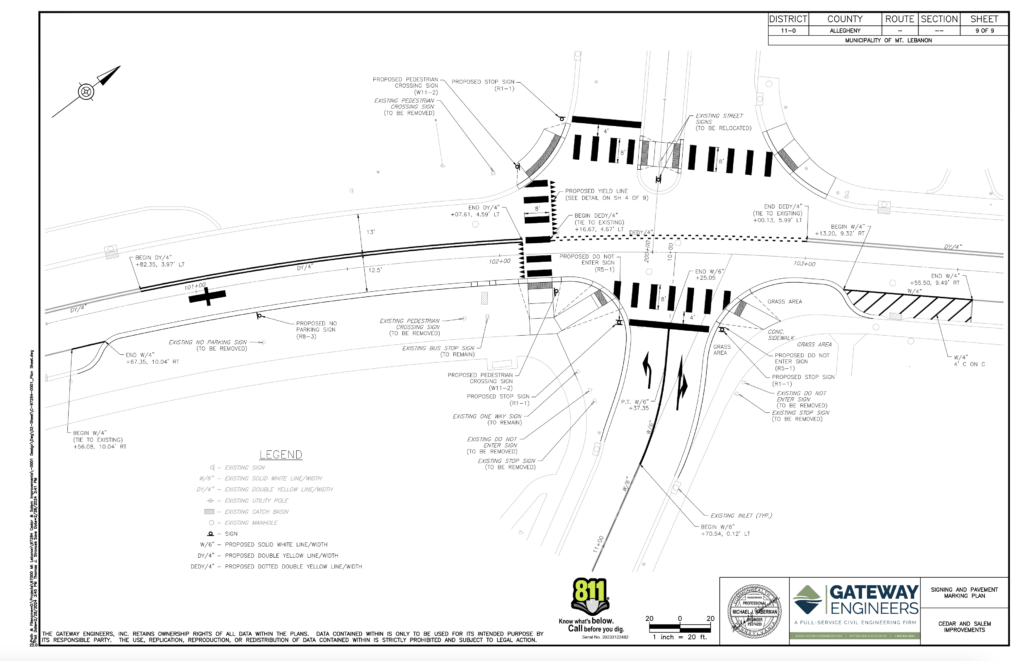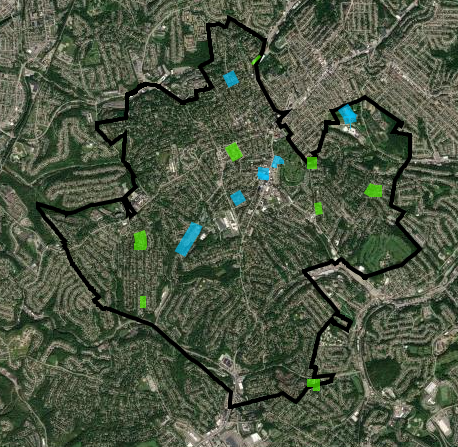Check out what’s
Trending

South Garage work to temporarily change routine
We also have road surfacing and construction, which is part of the yearly municipal road improvement contract. We will always contact affected residents about this type of repair. We also will post it here every construction season so all drivers can become aware of it.

Water company contractors will be closing Shady Drive East from Castle Shannon Boulevard to Alfred Street on Monday, April 29. The closure will start at 8:30 AM and should only last one day. The street will be opened by evening.
Water company contractors will be installing a new water main on Cedar Boulevard, beginning at its intersection with Gilkeson Road and ending at its intersection at Beadling Road, starting on March 14, with the saw cutting of the pavement.
No parking signs will be posted in the area where the crew is working and Mt. Lebanon police will be on site. Residents will always have access to their homes and are encouraged to park in their driveways.
Work hours are 7 a.m. to 5 p.m., Monday through Friday.
The next two phases of the project, which will include installation of new service lines to each individual household and then paving and restoration of disturbed properties, will follow at a later date. Residents will be notified in advance.
Special arrangements can be made with the onsite supervisor to help relieve any unseen situations:
Water company contractors will be installing a new water main on Williamsburg Road from Cochran to Larchmont. Work will begin April 1 and work hours will be 7 a.m. to 5 p.m. Monday through Friday. Sections of the street may be closed during work hours.
If you have questions, you may call (800) 565-7292.
Water company contractors are doing road base repair, weather permitting. The road will be closed to thru traffic during this phase.
No parking signs will be posted in the areas where crews are working and Mt. Lebanon police will be on site. Residents will always have access to their homes and are encouraged to park in their driveways.
Work hours are 7 a.m. to 4 p.m. Monday through Friday.
Special arrangements can be made with the onsite supervisor to help relieve any unseen situations:
Nate Haines: (412) 719-0312
Water company contractors will be starting the base repair from the water line on Monday, December 18. It should only take 2 days, weather permitting. The road will be reduced to one lane of alternating traffic during the work hours of this project, which are 7 a.m. to 4 p.m., Monday through Friday.
The final phase of the project, which will include the paving and restoration of disturbed properties, will follow at a later date. Residents will be notified in writing in advance.
Special arrangements can be made with the onsite supervisor to help relieve any unseen situations:
Nate Haines: (412) 719-0312
Water company contractors have installed new water mains on Edward Avenue. The project begins at McFarland Road and ends at the intersection with North Meadowcroft.
Starting Monday, Wednesday, April 24, contractors will mill and pave the road. The road will be closed to thru traffic during the work hours, which are 7:00 a.m. to 5 p.m., Monday through Friday. This phase is expected to be completed by March 31, weather permitting.
No parking signs will be posted in the areas where crews are working and will move along with the individual service line work. Parking will be permitted in the no parking area overnight and on weekends, but vehicles must be moved during work hours.
Special arrangements can be made with the onsite supervisor to help relieve any unseen situations:
Ryan O’Toole – (412) 719-0323
Jason Modrak – (412) 719-0314
Water company contractors will be starting the base repair from the water line on Wednesday, December 20. It should only take 2 days, weather permitting. The road will be closed to thru traffic during the work hours of this project, which are 7 a.m. to 4 p.m., Monday through Friday.
No parking signs will be posted in the areas where crews are working and will move along with the individual service line work. Parking will be permitted in the no parking area overnight and on weekends, but vehicles must be moved during work hours.
This phase is expected to be completed by December 29, weather permitting.
The final phase of the project, which will include the paving and restoration of disturbed properties, will follow at a later date. Residents will be notified in writing in advance.
Special arrangements can be made with the onsite supervisor to help relieve any unseen situations:
Scott Huffman: (412) 849-8188
Nate Haines: (412) 719-0312
Water company contractors will be doing the mill and pave portion of the project starting April 15, weather permitting.
The project begins at the dead end of the street and ends at the intersection with North Meadowcroft.
No parking signs will be posted in the area where the crew is working and progress with the crew and police will be on scene.
The road will be reduced to one lane of alternating traffic from 7 a.m. to 5 p.m., Monday through Friday. Residents will have access to their driveways during work hours.
Special arrangements can be made with the onsite supervisor to help relieve any unseen situations:
Ryan O’Toole – (412) 719-0323
Jason Modrak – (412) 719-0314
Robb Hollow Road: TBD, 15-20 days pipe installation.
The contractor is installing underground conduit and fiber optic cables along Bower Hill from Washington Road to the border with Scott Township. Residents can contact the following individuals with concerns about the work being done or restoration issues: Chris Luden, Thayer Group, (814) 490-2540, Mike Brennan, Thayer Group, (814) 323-1711, Teagan Kramer, Zayo, (303) 859-3532.
We don’t have all information yet for this season’s project lineup but in some cases, we have estimated info. We’ll update this page as we know more. All completion dates are estimated and do NOT include road restoration, which Mt. Lebanon requires and will be completed later.
Work started on Castle Shannon in March and is expected to be done in April. Work will progress to Cooke Lane, Crystal and Arlington.
Cooke Lane will be closed during much of the work. You will have access to Rite Aid and the bank. Cooke Lane start: April 23 (this part will take approximately four weeks). Completion: Early September
Work will start along Castle Shannon Boulevard at Crystal. Start: May 1. Completion: Early October
Start: April 22 Completion: Early July
Start: May 13. Completion: Late October
Start: July 1. Completion: Early October
Contractors have closed the right lane on Bower Hill Road heading uphill. This will be a permanent lane closure on Bower Hill until the turning lane has been completed. Temporary Line striping will be installed. There will be NO PARKING on Bower Hill between Lavina Avenue and Washington Road until the contractor finishes the project. The contractor anticipates the project will last three to four weeks, depending on weather. The contractor has placed No Parking Signs on cones and barricades in order to notify the residents as well.
The intersection will be reconfigured this year for better flow and more pedestrian accessibility. Schedule to come.

Learn how streets are selected for our municipal road improvement program on our Road Work 101 page.
The 2024 summer reconstruction program will cost $2.4 million and include the Cedar intersection listed above. Other streets included:
| Street Name | From – To |
|---|---|
| Birch Avenue | Sunset Drive to Scott Road |
| Fernwood Avenue | Parkside Avenue to Dead End |
| Firwood Drive | Larchdale Avenue to 1145 Firwood Drive |
| Helen Drive | Banksville Road to Dollar General Driveway |
| Mapleton Avenue | Bower Hill Road to Rae Avenue |
| Meridian Drive | Haverhill Road to Country Club Drive |
| Oregon Trail | Connor Road to Municipal Line |
| Rawley Drive | Firwood Drive to Lakemont Drive |
View an Interactive Road Project Map to view streets to be reconstructed in 2024.

It should be noted that the schedule may need to be revised during construction due to unforeseen issues, such as utility service conflicts. Also the schedule may be affected by poor weather conditions.
Steps 1-2 will be completed on all streets prior to Steps 3-6 being completed. Therefore there will be some time after work has started on your street when no one will be working; this is due to the fact that they are completing work on the other streets. The time frame listed on the attached schedule is an approximate duration for work to be completed. This time frame may change depending on weather.
The program is scheduled to begin in May and rebuilding your street will create some temporary inconvenience. We appreciate your patience as we work to complete a major project that will enhance our community and help ensure your street lasts for another 30 years. Unlike periodic patching and resurfacing, street reconstruction involves removing the old base, replacing deteriorated curb and installing new subsurface drainage before applying a new surface.
During the phases of reconstruction, you will not be able to park on your street. When you cannot use your street or driveway, you may park during the day and overnight on nearby streets where it is legal. You do not have to contact the Police Department. The Municipality will notify the Police Department for you. Please be conscious of other residents when you are parking on the streets. Do not block driveways and be aware of resident’s need to have ample room to back out of their driveways when parking on the streets. The contractor will leave a notice at your front door a few days before construction begins.
Emergency fire, police and medical rescue service will continue as usual, and regular garbage pickup and mail delivery will be maintained. If your street is closed and you need to pick up or drop off a person with a disability or a medical condition, please talk with the Contractor’s foreman. If necessary, he can arrange to have that person transported out of the construction area.
If you are planning to move or are expecting a large delivery during the process, please notify the municipal engineer at (412) 409-2398 as soon as possible. Arrangements will be made if possible; however, you may need to modify your schedule.
If you have an irrigation system or an invisible dog fence please let the Contractor’s foreman know prior to the start of construction. These systems are not marked on the surface so there is the potential for accidental removal by the Contractor.
During the Summer of 2024, the $479,350 contract will include:
| Street Name | From – To |
|---|---|
| Cedar Boulevard | Morgan Drive to Mayfair Drive |
| Cedar Boulevard | Baywood Avenue to Washington Road |
| Florida Avenue | Cedar Boulevard to 666 Florida Avenue |
| North Meadowcroft Avenue | Morrison Drive to Dixon Avenue |
| Illinois Avenue | Mississippi Avenue to End |
| Mississippi Avenue | Municipal Line to End |
| Shady Drive East (Alt. No. 2) | Washington Road to 615 Shady Drive East |
| Magnolia Place (Alt. No. 6) | Magnolia Place to Savannah Avenue |
View an Interactive Road Project Map to view streets to be resurfaced in 2024.

It should be noted that the schedule may need to be revised during construction due to unforeseen issues, such as utility service conflicts. Also the schedule may be affected by poor weather conditions.
Mt. Lebanon’s Historic Brick Streets are cherished parts of our neighborhood character. As such, the Mt. Lebanon Commission passed a brick streets policy in 2023 to help ensure the continuity of key brick roads. Read the policy here.
Check out what’s

South Garage work to temporarily change routine



